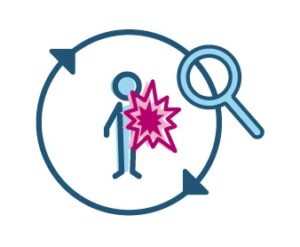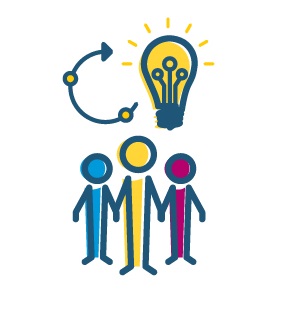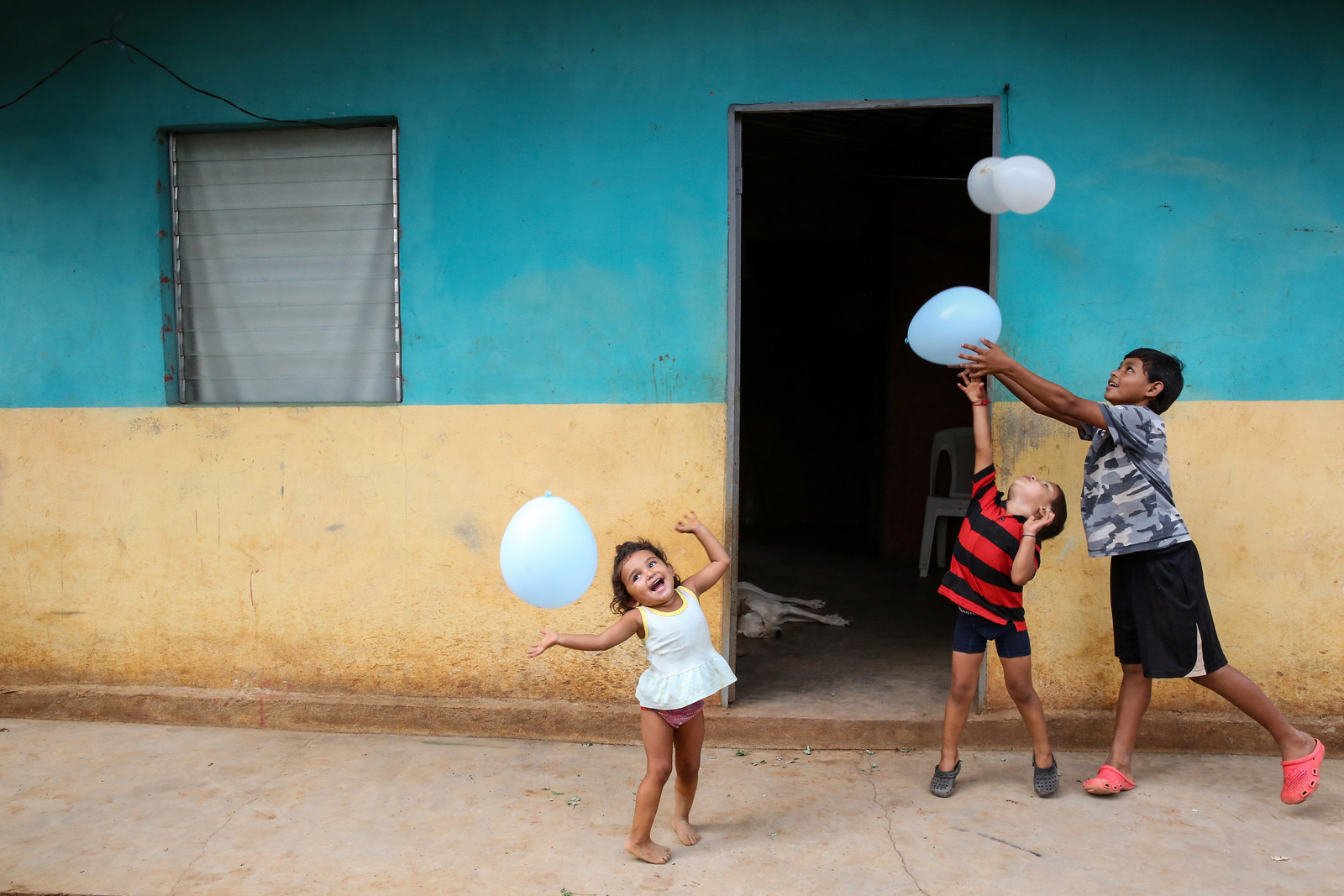
 Humanitarians are masters at conducting needs assessments, but these focus primarily on needs resulting from exposure to abuses and conflict dynamics. Needs assessments are not designed to examine the repeated patterns of violence, coercion, and deliberate deprivation that people experience and the source of these threats. As a result, there is a tendency for humanitarians to come in with preconceived notions of risk that can lead to poorly designed programs that generalize vulnerability across affected communities.
Humanitarians are masters at conducting needs assessments, but these focus primarily on needs resulting from exposure to abuses and conflict dynamics. Needs assessments are not designed to examine the repeated patterns of violence, coercion, and deliberate deprivation that people experience and the source of these threats. As a result, there is a tendency for humanitarians to come in with preconceived notions of risk that can lead to poorly designed programs that generalize vulnerability across affected communities.
Results-Based Protection emphasizes the importance of breaking risk down into the specific component parts that make up the risk to more comprehensively understand the characteristics of the threats, who are vulnerable to specific threats and why, and the capacities communities have concerning the threat. It is essential to do this— as far as possible—from the perspective of people experiencing the risk. Existing methods familiar to staff can be adapted to undertake a detailed analysis of risk. Risk mapping is a good example of this.
 You may be asking-what exactly is risk mapping, and what does it look like? At its most basic, risk mapping is a graphical description of the risks that community members face. Drawing from human-centered design practices, this methodology emphasizes starting from the perspective of affected populations to identify threats, vulnerabilities, and capacities. At its core, human-centered design is a bottom-up approach that is multi-disciplinary, context-specific, community-based, and iterative. Humanitarians can use their findings from risk mapping to deepen their protection analysis and more effectively design programs that achieve protection outcomes.
You may be asking-what exactly is risk mapping, and what does it look like? At its most basic, risk mapping is a graphical description of the risks that community members face. Drawing from human-centered design practices, this methodology emphasizes starting from the perspective of affected populations to identify threats, vulnerabilities, and capacities. At its core, human-centered design is a bottom-up approach that is multi-disciplinary, context-specific, community-based, and iterative. Humanitarians can use their findings from risk mapping to deepen their protection analysis and more effectively design programs that achieve protection outcomes.
RISK MAPPING is a Participatory Rural Appraisal (PRA) methodology used around the world, most frequently used by development actors and those working on climate change and disaster risk reduction.
Risk mapping can be particularly helpful to explore context-specific risks with affected community members to deepen humanitarian actors’ protection analysis and jointly design effective programs that achieve protection outcomes. Risk mapping can allow space for those affected by the risks to share a more nuanced description of the threat, vulnerabilities, and capacities per risk type. This insight provides a solid basis for strong protection analysis and helps to prioritize key risks affecting a community. This case example highlights how risk mapping can be used in a humanitarian setting to engage affected populations on strategies for risk reduction.
Related resources on Participatory Rural Appraisal, risk mapping, and human-centered design:
PRA grew out of NGO field work; it is carried out using various modes of participatory [engagement], and has as its goal the ‘empowerment of local people’.
ROBERT CHAMBERS “The Origins and Practice of Participatory Rural Appraisal,” World Development 22, no. 7 (July 1994) pg. 958
What is Risk Mapping for Save the Children & how does it help unpack risk?
Save the Children’s approach begins directly from the perspective of the populations it works with.“Promoting a culture of peace” is the language adopted by Save the Children that mirrors how communities themselves speak about preventing violence. A phrase like “violence prevention” is known to put staff and community members at risk from retribution by gang-affiliated individuals. In implementing the risk mapping tool, Save the Children first worked with community members to explore the key protection risks they faced and what a “culture of peace” looks like for them.Through this approach, Save the Children established informal cooperation agreements with 22 communities where risk mapping was prioritized as an appropriate exercise to address these risks.Ensuring staff is equipped with the soft skills that enable effective communication with community and gang members is especially critical when carrying out a participatory methodology like risk mapping.
Risk mapping is done with different groups of community members—one group of girls and boys; one of men and women; and one of community leaders, which can include teachers, coaches, religious leaders, and other relevant individuals.These groups are invited to participate in a two- to three-day training in a safe space outside of their neighborhood. The training covers concepts of violence, including helping to unpack the components of risk threats, vulnerabilities, capacities. Other critical concepts are also explored, including gender equality, human rights, leadership, and other themes.
We are still learning to work in violent environments despite having more than fifteen years of experience because violent environments in Honduras are ever changing…That’s why our main guidance are the people from the communities themselves.
LIGÍA MENCÍA – Save the Children’s Project Manager in Honduras
Methods and frequency of engagement also vary by group. For example, a more participatory approach is used with boys and girls. Meetings are held only once per year to avoid heightening the risk associated with participating in a sensitive exercise. Workshops with boys and girls also explore their future and create “life plans” that focus on activities that don’t involve violence.
Ethical Considerations
Participating in risk mapping can come with its own risks that NGOs need to be aware of. In an interview for this case example, a group of girls talked about how they feel it is dangerous to participate in the mapping, fearing that gang members could learn of their engagement and target them. However, the girls feel that the benefits outweigh the risks, so they continue to participate. Participants of all ages sign consent forms (for the children, their parents sign) and there is an unspoken understanding that they do not speak about participating in the exercise beyond their parents and close friends.
Risk mapping entails groups coming together over the course of one half-day, with each community member pinpointing specific incidents of extortion, homicide, sexual violence, and other risks on a physical map of the neighborhood. This allows the group to see visually, in a holistic way, where incidents are concentrated. They use colored tacks for each type of abuse and arrange the tacks on the map. While doing this exercise, Save the Children staff facilitate a conversation on the risks that the community members raise and explore the characteristics and dynamics of the threat. This allows for a rich discussion on community members’ vulnerabilities to each threat and their existing capacities to address it.
The risk maps are updated by the groups of men and women and community leaders two to three times per year, and by girls and boys once per year.In a 2020 update session, 11 boys and girls from one community—labeled a “red zone” due to the level of violence—came together in a safe location in their neighborhood for one afternoon. The risks they identified focused mainly on gang violence, including killings, extortion, and kidnapping. One of the key geographical areas noted are the “invisible borders” that delineate territory that gangs control and represent hotspots for certain risks. This new pattern of violence helped Save the Children support communities to adapt action plans aimed at addressing some of these protection risks.
After the risk mapping sessions, Save the Children staff digitize the information and create two versions of their findings: one with full details that is shared back with those who participated in the exercise and is for Save the Children’s use in strengthening protection analysis and designing activities. The other is a second version with less information (e.g., omitting drug selling points) that can be shared publicly. The public version is shared in community centers, health centers, and schools in the neighborhood.
A participatory method that can inform & encourage behavior change
Participating in this risk mapping has an impact on the girls’ own behavior. In focus group discussions for this case example, they noted that they take the information they learn during the sessions and are cautious about going to certain areas and are more generally aware of their environment. For example, they learned from one of the other boys participating about a particular area where gang members had recently killed someone.
These girls weren’t aware of this incident before but have avoided the area since. It is useful to understand, directly from the girls’ perspectives, how participating in this exercise prompted a change in their own behavior in order to reduce their risk. Understanding the community’s self-protection strategies and other capacities can serve to inform NGO protection strategies.
Save the Children uses the risk maps to devise strategies to improve the safety of children in schools and the community.The maps provide a solid basis for analysis of where existing threats are geographically manifested, as well as the community’s vulnerability and capacities to deal with the threats. For example, in one community, the gang operating there prohibited certain haircuts and hair colors and had other elaborate rules and restrictions. The risk maps allowed the community and Save the Children to create an action plan to tackle these problems.The community decided to organize activities to publicly bring together community members to create a safe space—in this instance, a soccer field—to demonstrate public unity against the gangs and their prescribed “rules” for haircuts and hair colors. It was a demonstration of ownership and a collective tactic to “take back” their community.
As well as identifying where incidents occur, risk mapping illuminates safe spaces. Save the Children identifies the areas where girls and boys report the least amount of incidents and invest in building these spaces. These spaces may range from abandoned buildings where children gather to play to makeshift soccer fields.
Risk mapping has strengthened Save the Children’s bonds with the affected population, beyond its work to identify risk and its components. For instance, working directly with affected individuals through the risk mapping exercise has allowed Save the Children to build trusting relationships with the community. Later on, it even recruited staff directly from the community in which it worked, further increasing their acceptance among community members and their understanding of key issues.
Humanitarian organizations can learn from Save the Children’s experience with risk mapping in their efforts to achieve protection outcomes. Risk mapping is but one tool that allows for better continuous, context-specific protection analysis. Above all, starting from the perspective of a community and iteratively building off of their knowledge are the main takeaways of this case example—regardless of the methodology used.
What resources and skillsets are needed to carry out Risk Mapping?
- Facilitators who are trained on the risk mapping methodology and are equipped to guide the process, explore key questions, and unpack the risks further.
- Proper resources and systems in place for staff members to dedicate the time needed to identify community members and train them on fundamental concepts.
- The ability to build trusting relationships with the affected community. Save the Children has learned that having staff members from the affected communities helps facilitate project activities as they may already have or are able to more easily gain the trust of individuals.
- Investing in soft skillsets associated with communicating effectively with communities (and occasionally gang members) is essential. In particular, this includes being aware of and avoiding language that may be perceived as threatening. For example, Save the Children staff avoid the phrase “reducing violence” and instead say “building a culture of peace.” Similarly, gang members should never be referenced by their real names but more generally referred to as “the boys” as this is perceived to be less critical.
- Access to knowledgeable community members who are willing—and safely able—to share sensitive information.
- A physical copy of a map of the neighborhood, community, or region—or blank paper for people to draw their own map—and tacks/markers/post-it papers to document incidents on the map.
- Ability to digitize or otherwise synthesize information from the maps following discussions.
INVESTING IN STAFFING
In terms of staffing, when they first started operating in communities around San Pedro Sula, Save the Children’s team consisted of individuals from San Pedro Sula and Teguicigalpa who were tasked with working in neighborhoods outside of these cities. After noticing a high turnover of staff during the first three years of the program, Save the Children started to recruit staff directly from the communities where they were working. Now they have a team of six individuals, four of whom are local community members. This increased Save the Children’s understanding of issues affecting the community and increased their acceptance by the community.
RBP questions to consider
-Risk mapping is a useful and participatory approach to visually depict protection risks from the perspective of the community. How can this method be used in conjunction with other forms of analysis (i.e., historical and conflict analysis, stakeholder mapping, gender analysis, etc.) to enhance context-specific protection analysis?
-Given the multitude of protection risks that exist, how could this exercise also incorporate a prioritization of risks from the perspective of the affected population?
This case example is based on an interview with four girls and seven women from local communities in and around San Pedro Sula, Honduras, as well as Save the Children staff members Ligía Mencía, Project Manager; Argentina Zepeda, Volunteer; Tamara Medina, Technical Staff on the Prevention of Forced Migration and Gender Issues Team; and Héctor Aguilar, Project Coordinator in Prevention of Forced and Unaccompanied Childhood Migration. The interviews took place in February 2020.
CLICK HERE TO EXPLORE OTHER CASE EXAMPLES OF RBP IN ACTION
READ MORESign-up
"*" indicates required fields
